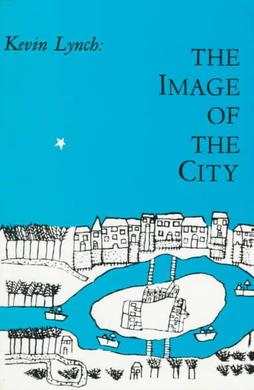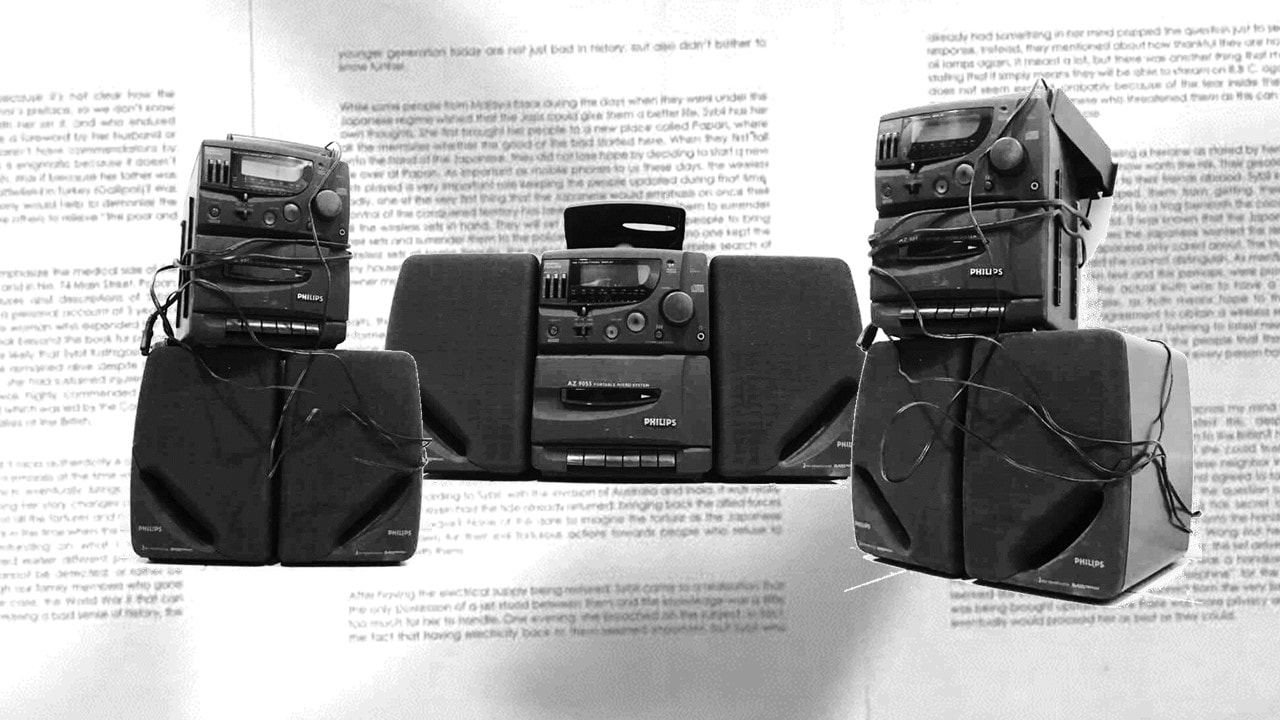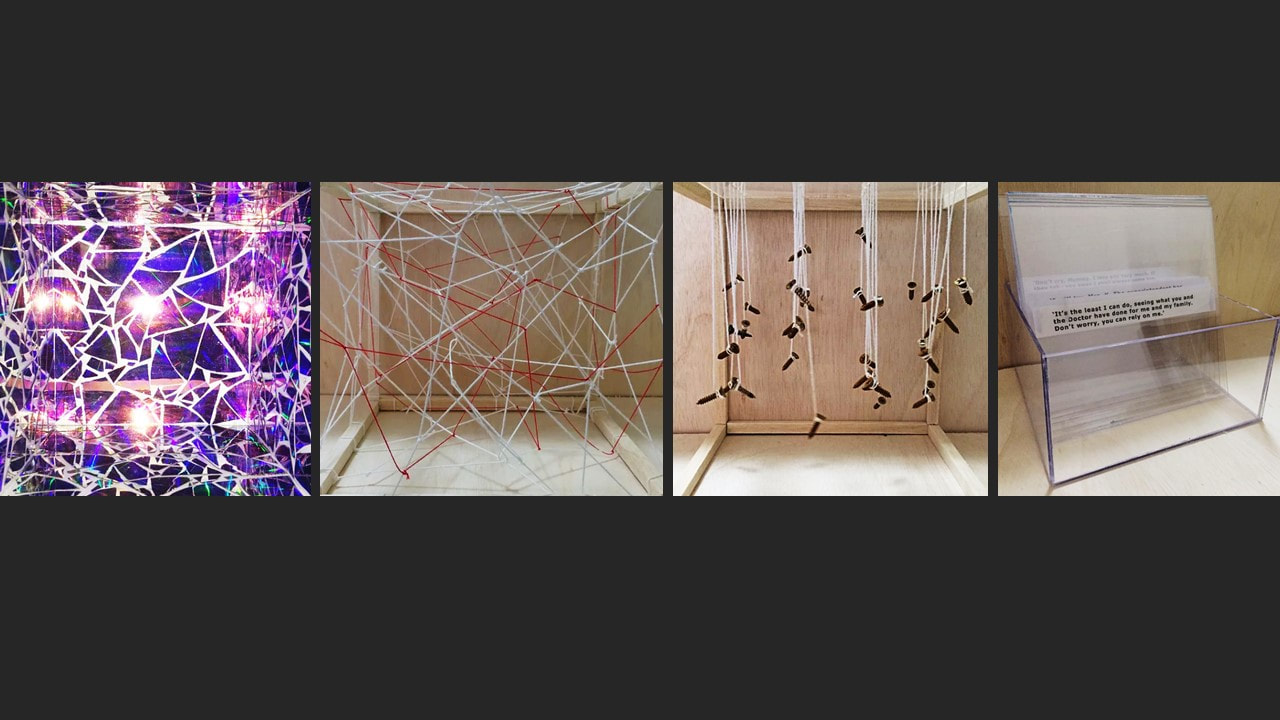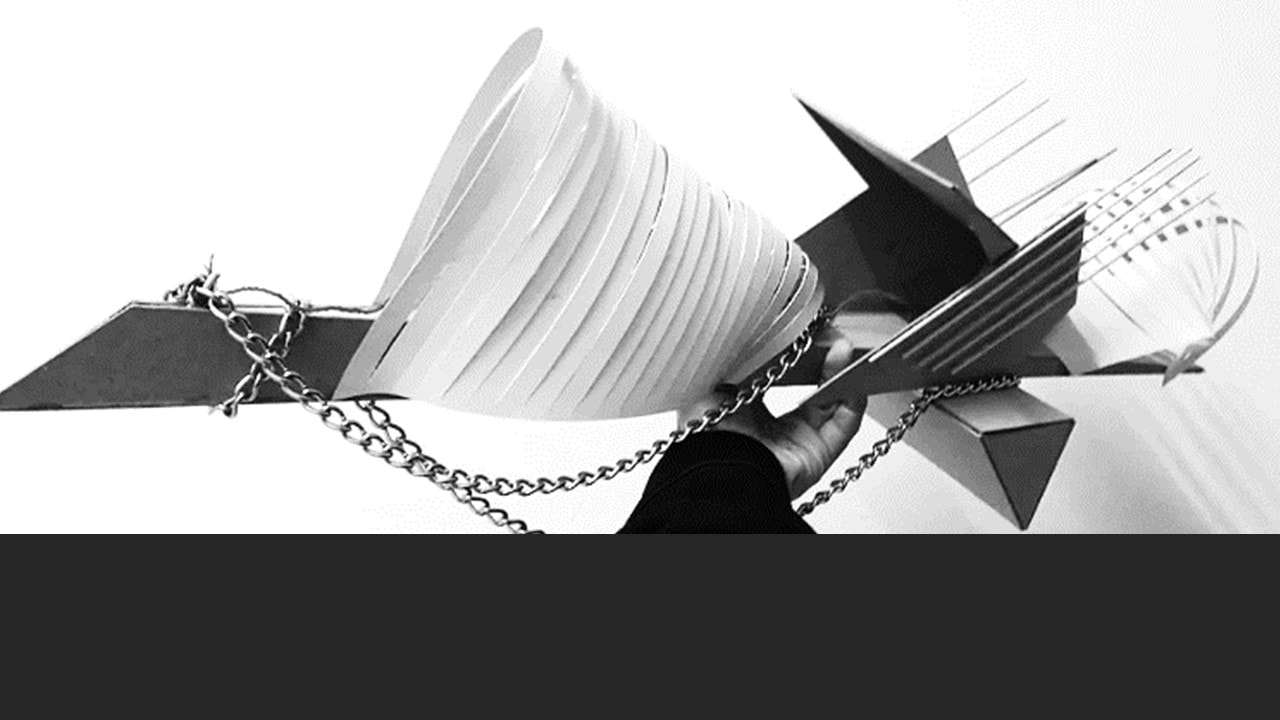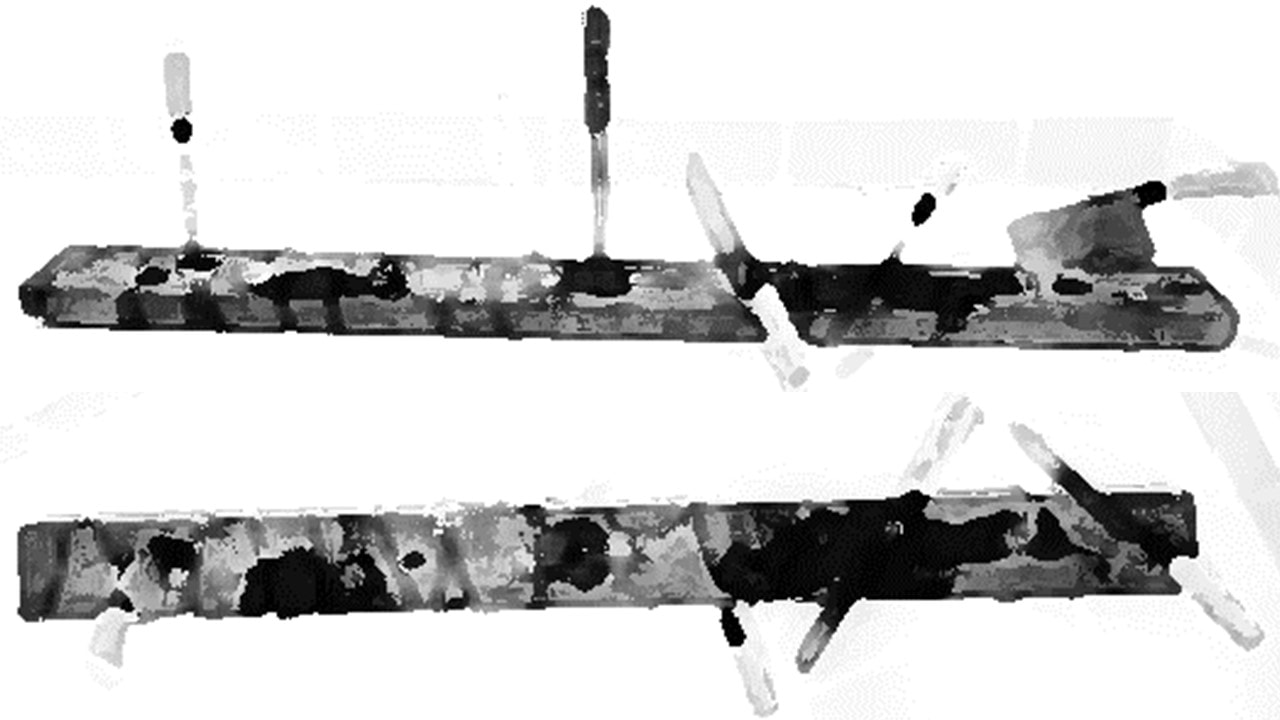THE ACTS... THE INSTALLATIONS OVERVIEW
|
A tragic story set in the context of Japanese occupation of Malaya centralized on a main motherly figure of a wife, mid-wife, nurse, mother, communist sympathizer, criminal of war and later a much forgotten heroine of the British Empire that the Neo-Malay dominant “Ketuanan” Malaysia desperate to forget by exclusion from the Malayan His-Story, almost unheard of in the history textbook of secondary school of Malaysia.
Apart from the backdrop of Papan, now almost a deserted town after decades of tin mining extravaganzas, it has its pretext set against this very tragic story of a woman, her family against the Japanese Imperialist. A story that has its first hand encounter of motherly loves, sacrifices, fears, empathies, services, pains, hopes, torments, frustrations, undying faiths, retributions, confusions, cynicism, perversions, shelters, individualism all mixed in a concoction of brutalist ego centric heroism. |
THE CONTEXT AND THE PRETEXT...
|
As many would idolized the scenic almost abandoned streetscape of Papan with the post-war shop fronts, serene pools of post-mine man-made lakes and its unforgettable tragic history of blood, pains and forgotten dreams, it is very easy to draw upon these features to paint an idyllic cast upon the notions of Heidegger’s phenomenology as an architectural interpretation of the genus loci of such place. An attempt to take a rather uncommon twist in reading such story as a third party reader further displacing the common narrative into an uncommon fictions. A deference has to be cast upon history, story and fictions, a common attempt in deconstruction.
Deconstruction as explained in Derrida, is an idea to dismantle the excessive loyalty to any idea, in this case, phenomenology, in order to see its truth lying in the opposite. In “de la grammatologie”, the attempt to deconstruct is in the attempt to understand the construction of its narrative, in this case, reading of the book. The book itself has its genesis from the typeset yet it is deemed as a transcript from its primary mode, speech. Text itself lacks the authenticity compared to a speech that comprised interactions of the truth through conversation itself, dialogue. Dismantling such dogmatic narration, example, speech over writings, reasons over passions, men over women, words over pictures, sight over touch, it enables us to distill the third force among the rumbles of the untruth. |
|
Deconstructing this narration takes the following fragments into play, namely the Ego and Persona, the Para-Noia and the End-Noia, aligned against the Jungian’s psychology as its underlying philosophy to deconstruct an idea as in ideation. The corpus is vested upon its actor, in this case, a main motherly figure of a wife, mid-wife, nurse, mother, communist sympathizer, criminal of war and later a much forgotten heroine of the British Empire that the Neo-Malay dominant “Ketuanan” Malaysia desperate to forget by exclusion from the Malayan His-Story, almost unheard of in the history textbook of secondary school of Malaysia. The stage is set against a hypothetical space compressed as an installation, potentially magnified into a folly following the path of Tschumi’s Red is not a Color, collectively resembles the constellations of follies the the genus loci of Lynch’s The image of the City, nodes paths and edges as a larger narration within another narrations. These narrations are the scripts that completes the trinity of ideation namely, the actor, the stage and the scripts.
|
|
Act 01 to 03 resembles the Ego and Persona of the main motherly figure of a wife, mid-wife, nurse, mother, communist sympathizer, criminal of war and later a much forgotten heroine of the British Empire. Act 04 to 08 resembles the Para-Noia of the main motherly figure against herself and the people around her. Act 09 to 11 resembles the End-Noia of being torture and holding her faith right to the day her life expired. Act 12 to 15 conclude of her pain towards the realization of the one, Noia.
We are all the actor. The self is the actor. Jung described the self as Noia, Para Noia and End Noia. To understand the actor we must know who we are and what are the product we create for? This is the first principle as a designer or an actor. Noia is defined as the self with an undifferentiated ego. Enlightenment is the best way to prescribed Noia. Paranoia or paranoid is a state where there is a differentiation between the self and its ego. The normal person would like to project himself as someone with an identity such as male/female, race, religions, rich/poor, weak/strong and so forth. These are paranoid mentalities. End Noia is a total displacement of the self and the ego. Crazy may be a better choice of word. |
Act 01: PORTRAITUREA portrait is a painting, photograph, sculpture, or other artistic representation of a person, in which the face and its expression is predominant. The intent is to display the likeness, personality, and even the mood of the person. Crucial at this point is the re-construction of a portrait of a main motherly figure of a wife, mid-wife, nurse, mother, communist sympathizer, criminal of war and later a much forgotten heroine of the British Empire that the Neo-Malay dominant “Ketuanan” Malaysia desperate to forget by exclusion from the Malayan His-Story, almost unheard of in the history textbook of secondary school of Malaysia. These re-construction is further de-constructed by layering the fragments of these features of the portraits by means of different materials manifesting the multiple personas of the heroine in this narrative that appeared to be fragmented, displaced, disjunction, mutilated at one elevation yet come together as a cohesive, seamless, composed portrait at another elevation.
|
Act 02: A SLICE OF SPACE TIMETo re-construct a model of a space time continuum in the life of a main motherly figure of a wife, mid-wife, nurse, mother, communist sympathizer, criminal of war and later a much forgotten heroine of the British Empire that the Neo-Malay dominant “Ketuanan” Malaysia desperate to forget by exclusion from the Malayan His-Story, almost unheard of in the history textbook of secondary school of Malaysia. To de-construct a model of a space time continuum in her life, by single out a slice of these ‘space time’ continuum for close examination, re assemble back these slices as though history has an ‘if’. Her story of motherly loves, sacrifices, fears, empathies, services, pains, hopes, torments, frustrations, undying faiths, retributions, confusions, cynicism, perversions, shelters, individualism all mixed in a concoction of brutalist ego centric heroism would have taken another twist.
|
Act 03: BOX OF INSTALLATION OF LIGHTSThe box set the stage and the actors are the lights. This attempt is to build an installation of a non-physical properties, which is light. The box becomes the medium of stage where lights are the actors. Apertures above allowing lights in many kinds appear, disappear, combined, and dissolved chronologically narrating the persona of the main motherly figure in her attempt to find space between her egos. Such discourse deconstructed the narrative beyond the spectrum of the physical medium into the subliminal meta-physical medium of augmented realism.
|
Act 04: RADIO MISREADINGDerrida’s “de la grammatologie”, the attempt to deconstruct is in the attempt to understand the construction of its narrative, in this case, reading of the book. The book itself has its genesis from the typeset yet it is deemed as a transcript from its primary mode, speech. Text itself lacks the authenticity compared to a speech that comprised interactions of the truth through conversation itself, dialogue. In this attempt to deconstruct speech itself into the remnants of text that has been re-constructed beyond the norm of gramma into something else that its syntactical structure has been deconstructed while maintaining its morphologies. Observers are encouraged to read aloud the deconstructed text as a remittance of the radio broadcast once broken thus arising the notion of misreading of texts that are beyond comprehension. Such was taken from a leaf of the main motherly figure’s narration, codenamed ‘Josephine’.
|
Act 05: GRID OF DESTINIESThe grid as these boxes contained within; passing through these bellies of platonic forms; the observer were forced to experience the destinies manifested before the main motherly figure of a wife, mid-wife, nurse, mother, communist sympathizer, criminal of war and later a much forgotten heroine of the British Empire that the Neo-Malay dominant “Ketuanan” Malaysia desperate to forget. From the shattered dreams of her paranoid existence as in Heidegger’s Existentialism to the webs of concoction of Foucault’s End-Noia and the tipping point of Wittgenstein's transcendental liberations of floating nails, these metaphorically sums up her misadventure of her persona and ego.
|
Act 06: SHELTERProviding the basic shelter is the epitome of service beyond recognition, for a main motherly figure of a communist sympathizer. There is no basic shelter compared to a fetus in a mother’s womb, protected, nourished, sheltered, healed, warmth, stimulated. To re-construct such womb in the layers of fragmented, displaced, disjunction, mutilated crater in the silhouette of a motherly figure in fragmented shrapnel that subjected to gravity resulting in a contouring of a full bodied pregnant mother with full bloomed bust signifying nourishment. Such deconstructed figure would be able to be translated as a shelter of web drawn leaves tied to the canopies of trees.
|
Act 07: ANATOMY OF PAINBetween the portrait of a main motherly figure and the shelter she provides as a mid-wife, nurse, communist sympathizer, this attempt to deconstruct her persona into an anatomy of apparatus, each is but a signifier of her internal organs signified the perpetual abuse, torment, raped, violation that has been displayed by the aggressor upon its victim. Such apparatus fragility, temporal, aged, morbidity are ever present making up the entirety of her life story as a narration, dialogue, scripts, acts that one passes through as an assemblage of spaces between, within, above these internal organs appeared before the observers as apparatus of Kuhnnian’s post-scientific paradigm.
|
Act 08: TENSIGRITY OF EGOA state of Para-Noia. Paranoia or paranoid is a state where there is a differentiation between the self and its ego. The normal person would like to project himself as someone with an identity such as male/female, race, religions, rich/poor, weak/strong and so forth. These are paranoid mentalities as according to Jungian’s psychology. Therefore the ego of the main motherly figure of a wife, mid-wife, nurse, mother, communist sympathizer, criminal of war and later a much forgotten heroine of the British Empire that the Neo-Malay dominant “Ketuanan” Malaysia desperate to forget, continuous to pull apart, in tensions, compressed in a web ad-infinitum jotting among the tensile and spoke with weak links all over. Fuller’s geodesics principles are governed by these tensegrities as defined as a structural principle based on the use of isolated components in compression inside a net of continuous tension, in such a way that the compressed members (usually bars or struts) do not touch each other and the pre-stressed tensioned members (usually cables or tendons) delineate the system spatially.
|
Act 09: OF PRISONS AND WALLSInvestigating into Foucault’s The Order of Things, diagnosing the penchant of powers manifested into Prisons and Asylums, digging deep into the past for the remnants of relics to be used for the present where madness of the past maybe construed as the saneness of the presence. Similarly so, the notion of solitary confinements as in prisons are but manifestation of the archi-tectonics of wall bounded on the four sided bounded by the dimension of space time, an essence of gravity but what if such be transpired beyond this realities into the another parallel dimensions where gravity does not work? Such deconstructed realities are but madness of the presence but saneness of the distant future now, warp up in space-time into a wormhole that deconstruct the entire notions of Foucault’s The Order of Things.
|
Act 10: FOREST OF NAILSInvestigating into Wittgenstein's paradox, the signifier and the signified are called to be deconstructed, in resemblance the antagonistic struggle between a rabbit or a duck or both. A nail driven into someone's flesh punctuating, driving into the bones casting an insinuating pain, blood spilling out, maybe gushing demonstrating the pervasive pains suffered by the criminal of war, the signified. The types of nails signifier of the contortion of the patriots, heroes of war, trees and the personas of fragmented and broken egos all echo through the forest of pains through the illusionary paths of hope, derived non other from the pages of the narration of a main motherly figure of a wife, mid-wife, nurse, mother, communist sympathizer, criminal of war and later a much forgotten heroine of the British Empire that the Neo-Malay dominant “Ketuanan” Malaysia desperate to forget by exclusion from the Malayan His-Story, almost unheard of in the history textbook of secondary school of Malaysia.
|
Act 11: CURTAIN OF FEARSPerhaps the most dramatic twist to the narration of the Japanese occupation affecting the main motherly figure of a wife, mid-wife, nurse, mother, communist sympathizer, criminal of war vested upon the colossal of fears that draped upon one’s persona liked a blade that cut through slicing, bleeding, severing, chopping, mincing the soft tissues of a living ego against the dead chill, cold, lifeless, shivering, sharpened steel of blades, a deconstructed perverted realism of the path that the main motherly figure has invited upon herself. Her liberation is manifested not by the blades but by its handles that arrayed through a synchronized form, the signified, of a wing in flight as a signifier of freedom. In the same augmented realism, between the perversion of pains and the liberation of freedom vested upon the persona whom the handle is held. Such manifestation of a sequential form potentially translated into architectural canopies may spur further dialogue.
|
Act 12: DISSOLUTION OF THE EGOThe narration of the main motherly figure of a wife, mid-wife, nurse, mother, communist sympathizer, criminal of war and later a much forgotten heroine of the British Empire that the Neo-Malay dominant “Ketuanan” Malaysia desperate to forget, survived via her writings. Her writings survive due to her manuscripts. Her manuscripts survive due to her publication. Her publication survive due to the typewriter. The typewriter is the reconstruction of her ego narrating her persona. To deconstruct her ego is then to deconstruct the typewriter into its inherent fragments. Reconstructing these fragments reassemble her ego. No longer a typewriter her ego takes another persona. What could this persona be?
|
Act 13: IF IT’S AINT BROKEN, IT’S AINT WORTH MENDINGThe tormented persona and its displaced ego are the best manifestation of the stage of End-Noia, depicted as a broken entities and in its absolute deconstructed stage. These fragments of ego, if it is deemed not broken it is not worth mending are but the positions of the Japanese aggressor to tear apart, break, destroy, demolish whatever left of the main motherly figure’s ego. In contradiction to such deconstructed ego, no matter how they are mended will leave scars that are the epitome, remembrance, constituents of the persona of Noia that is manifested by faith and memory that only heals by time.
|
Act 14: FLIGHT OF FREEDOMReflection into the stage of Noia, the carcass is the prison of the Persona. The prison is the solitary confinement of the carcass, the Japanese insurgence is the prison of the prisons itself. The A-Bomb is the confinement of the Ego of the Japanese, and so forth. Between liberation and confinement, what is the in-between? Time. Time decayed the cage that bound the main motherly figure of a communist sympathizer and a criminal of war. Time manifested the deconstructed remnants of the cage into the liberation of re-constructed wing in flight sequence dominated by time itself. By the same token, these flights resembled a canopy, a shelter, a folly that when one passes, it resembles passing through time itself as in the colossal of the column-ades of the much forgotten five foot ways typologies.
|
Act 15: CROSS OF COMPLEXITY AND CONTRADICTIONRevisiting Venturi’s post modernism Complexity and Contradiction in Architecture, the notion of signifier and the signified have been given a new twist resemble of Baudrillard’s Hyperreal and the Imaginary from Simulacra to Simulation, often provoking our acceptance of a simulated realities such as Disney and to a certain degree, Flintstone. Such lens are taken to re-examined the Noia of the main motherly figure of a wife, mid-wife, nurse, mother, communist sympathizer, criminal of war and later a much forgotten heroine of the British Empire that the Neo-Malay dominant “Ketuanan” Malaysia desperate to forget as to what faith contain within that made of what she was. The stage was set at the simulacrum of the crucifixion of Christ, simulating herself in a poseable wooden human mannequin, as a nurse, mother, communist sympathizer, criminal of war and later a much forgotten heroine of the British Empire, sacrificing herself to clean the sins of her families and the people of Papan, at the bayonet of a Japanese soldier taking the simulacrum of an ultra-man figurine, unmistakably a Japanese product. Potentially set as a chapel of cross in the middle of the lake for Papan.
|
Act 16: INTERROGATION Icombined my idea from the mock-up model and the research into one. This time, I used steel as my main material in the model. I craft the incomplete body, which means that Sybil Kathigasu was tortured really bad, and eventually lost the ability to walk by herself. The model was painted in black colour according to the situation when Sybil is detaining in the cell block. I applied the rhytm principle into my model, i get the idea when japanese torture Sybil repeatly to reveal the information that she had.The model represent a timeline, the foot is the beginning. From the beginning, the foot is fixed on the base, which meant Sybil was captured by the japanese. After that, the wire net represent the cell block and the steel wire represent the torture applied on Sybil, she was tortured repeatly with different kind of methods, which show the properties of rhytm. Lastly, the steel net only come before the knees, represent the coming of liberation, but at the same time, the steel wire still extend even during the liberation time had came, this represent that Sybil still torturing by the previous torture japanese applied on her. Some will ask why there is only a hand, this is because I wanted to show the incompleteness of Sybil Kathigasu, and also represent that Sybil hold and keeping the secrets of MPAJA until the liberation has come.
|
IN CONCLUSION...
15 Acts, thematically arranged on the pretext of Para Noia, End Noia and Noia, narrated in the flair of deconstruction against the stage of installation, potentially magnified into a folly following the path of Tschumi’s Red is not a Color, collectively resembles the constellations of follies in the suburb of Papan, these are the ideation of the actors in d:KON4.




